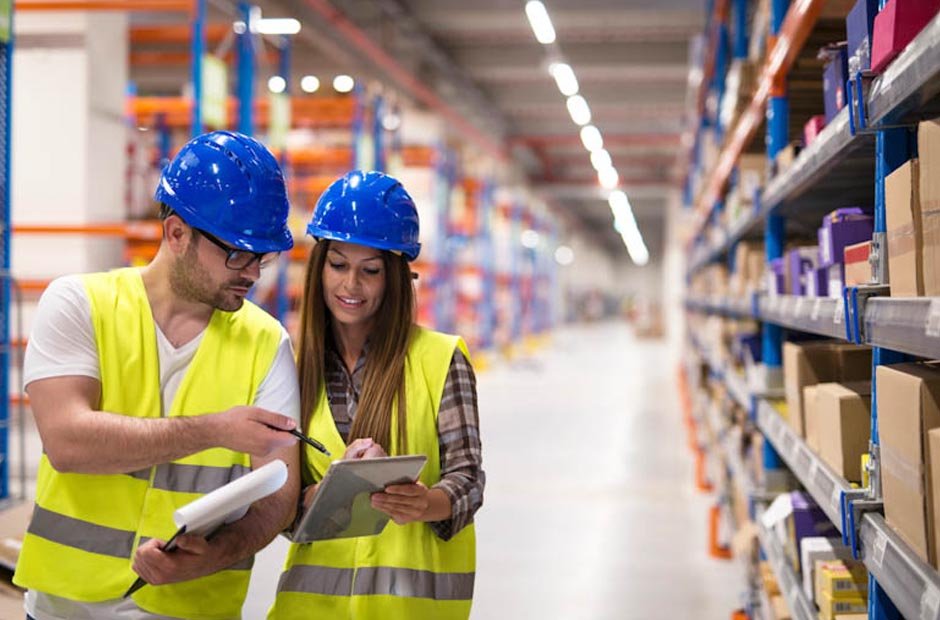Safety should always be the number one priority in any warehouse environment. With the bustling activity of moving goods, operating heavy machinery, and navigating through narrow aisles, the potential for accidents is ever-present. That’s why it’s crucial for warehouses to prioritize safety features that protect both workers and inventory. Here’s a look at eight essential safety features that every warehouse should prioritize to ensure a secure working environment. This article will explore everything from the forklift neutral safety switch and fire prevention to equipment maintenance and more.
Adequate Lighting
One of the fundamental safety features in any warehouse is proper lighting. Dimly lit areas increase the risk of accidents, such as slips, trips, and falls. Adequate lighting not only enhances visibility but also helps workers identify potential hazards and obstacles in their path. Well-lit warehouses also facilitate more accurate inventory management and picking processes, reducing errors and improving efficiency.
Clear Signage and Markings
Clear signage and floor markings are indispensable safety features in warehouses. They provide guidance for safe pedestrian routes, designated areas for heavy machinery operation, emergency exits, and hazardous zones. By clearly marking these areas, warehouses can minimize the risk of collisions, falls, and other accidents. Additionally, signage reminding employees of safety protocols and procedures serves as a constant reinforcement of safety practices.
Proper Ventilation
Maintaining proper ventilation is crucial for ensuring the health and safety of warehouse workers. In a confined space filled with machinery, exhaust fumes, and airborne particles, inadequate ventilation can lead to respiratory problems and discomfort for employees. Installing effective ventilation systems helps remove pollutants from the air, regulates temperature, and creates a more comfortable working environment, thereby reducing the risk of heat-related illnesses and fatigue.
Fire Prevention and Suppression Systems
Warehouse fires can have devastating consequences, posing a threat to both lives and property. Implementing fire prevention and suppression systems is essential for mitigating this risk. This includes installing smoke detectors, fire alarms, sprinkler systems, and fire extinguishers throughout the facility. Regular inspections and maintenance of these systems ensure their effectiveness in quickly detecting and containing fires, minimizing damage, and safeguarding the well-being of warehouse personnel.
Forklift Neutral Safety Switches
Forklifts are indispensable tools in warehouse operations, but they also pose significant risks if not operated safely. A forklift neutral safety switch can play a critical role in preventing accidents by ensuring that the vehicle comes to a complete stop when the operator leaves the seat. This feature prevents unauthorized use of the forklift and reduces the likelihood of accidents caused by unintended movement. By prioritizing the installation and maintenance of neutral safety switches, warehouses can enhance forklift safety and protect both operators and nearby personnel from potential harm.
Regular Equipment Maintenance and Inspections
Regular maintenance and inspections of warehouse equipment, including pallet jacks and forklifts, are paramount to ensuring their safe and efficient operation. Over time, wear and tear can compromise the integrity of these machines, increasing the risk of malfunctions and accidents. Implementing a comprehensive maintenance schedule, which includes routine inspections, lubrication, and component replacements, helps identify potential issues before they escalate into safety hazards. By prioritizing equipment maintenance, warehouses can prolong the lifespan of their machinery and prevent accidents caused by mechanical failures.
Operator Training and Certification Programs
Proper training and certification programs for equipment operators are essential safety features that every warehouse should prioritize. Operating pallet jacks, forklifts, and other heavy machinery require specific skills and knowledge to ensure safe handling and maneuvering. Providing comprehensive training programs not only familiarizes operators with equipment operation and safety protocols but also instills best practices for accident prevention and emergency procedures. Additionally, requiring operators to obtain certification demonstrates their competence and commitment to safety, reducing the likelihood of accidents due to inexperienced or unqualified personnel.
Traffic Management Systems and Barriers
Effective traffic management systems and barriers play a crucial role in preventing collisions and maintaining order in busy warehouse environments. Implementing designated traffic lanes, speed limits, and pedestrian walkways helps minimize the risk of accidents involving pallet jacks, forklifts, and other vehicles. Installing physical barriers, such as guardrails and bollards, further enhances safety by separating pedestrian areas from vehicle pathways and protecting work zones from potential impacts. By clearly delineating traffic flow and enforcing safety measures, warehouses can create a safer working environment for both personnel and equipment, reducing the risk of accidents and injuries.
The Bottom Line
In conclusion, safety should always be a top priority in warehouse operations. By prioritizing essential safety features such as adequate lighting, clear signage, proper ventilation, fire prevention systems, and traffic management systems, warehouses can create a secure working environment for their employees and protect valuable inventory. Investing in these safety measures not only reduces the risk of accidents and injuries but also enhances productivity and operational efficiency. Remember, when it comes to safety, there are no shortcuts – it’s always better to be proactive and preventive than reactive to prevent accidents before they occur.


